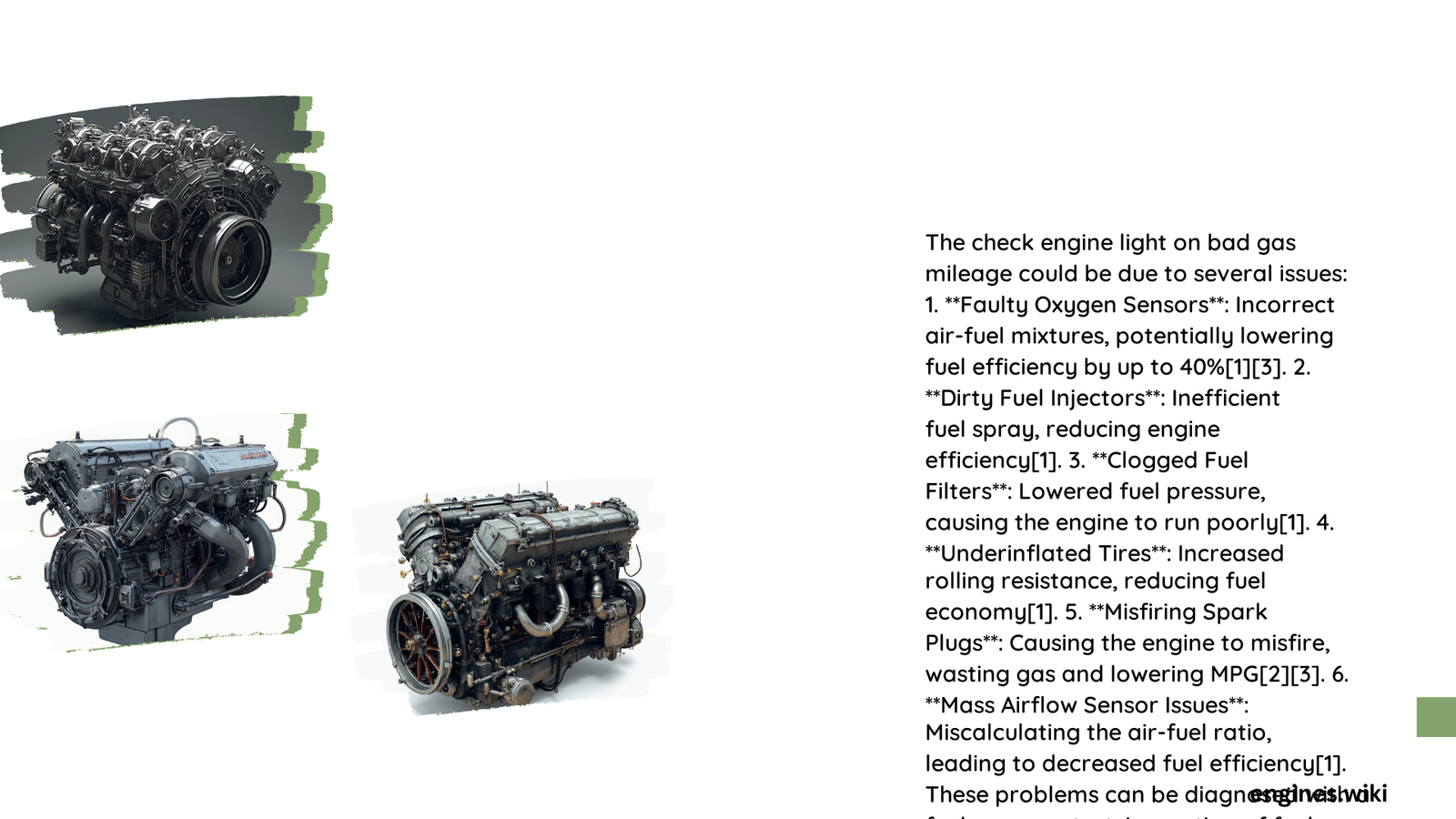When your vehicle’s check engine light illuminates and you notice a sudden drop in fuel economy, it signals potential underlying issues that demand immediate attention. Modern vehicles are equipped with sophisticated onboard diagnostic systems that can pinpoint specific problems affecting gas mileage, ranging from sensor malfunctions to critical fuel system complications. Understanding these signals can help you prevent costly repairs and restore your vehicle’s optimal performance.
What Causes Check Engine Light to Impact Gas Mileage?
Diagnostic Trouble Codes Revealing Fuel Efficiency Problems
| Code Range | Potential Issue | Impact on Gas Mileage |
|---|---|---|
| P0171-P0175 | Rich Fuel Condition | Excessive Fuel Consumption |
| P0300-P0306 | Engine Misfires | Reduced Combustion Efficiency |
| P0201-P0204 | Fuel Injector Malfunction | Uneven Fuel Distribution |
How Do Oxygen Sensors Affect Fuel Economy?
Oxygen sensors play a critical role in monitoring exhaust gases and helping the engine computer adjust the air-fuel mixture. When these sensors malfunction, they can cause:
- Incorrect Fuel Mixture: Too rich or lean combustion
- Increased Fuel Consumption: Up to 15-20% reduction in efficiency
- Potential Catalytic Converter Damage: Long-term system stress
What Are Common Symptoms of Bad Gas Mileage?
Drivers might experience several indicators suggesting fuel system problems:
- Sudden drop in miles per gallon
- Rough engine idling
- Decreased acceleration performance
- Inconsistent fuel gauge readings
- Unexpected check engine light activation
How to Diagnose and Resolve Fuel Efficiency Issues?
Professional Diagnostic Steps
- Code Reading
- Use an OBD-II scanner
- Identify specific diagnostic trouble codes
-
Determine precise system malfunction
-
Component Inspection
- Check oxygen sensors
- Evaluate fuel injectors
- Examine mass airflow sensor
-
Inspect spark plugs
-
Repair and Replacement
- Address identified issues promptly
- Use manufacturer-recommended parts
- Consider professional mechanic consultation
What Maintenance Prevents Gas Mileage Problems?
Regular vehicle maintenance can significantly reduce the likelihood of fuel efficiency issues:
- Scheduled Tune-ups: Every 30,000 miles
- Fuel System Cleaning: Annually
- Tire Pressure Monitoring: Monthly
- Air Filter Replacement: Every 15,000-30,000 miles
Cost Implications of Ignoring Check Engine Light
| Repair Type | Estimated Cost | Potential Savings by Early Intervention |
|---|---|---|
| Oxygen Sensor Replacement | $175-$300 | Prevent $500-$1000 in future repairs |
| Fuel Injector Cleaning | $50-$100 | Maintain 15% fuel efficiency |
| Spark Plug Replacement | $100-$250 | Reduce fuel consumption by 10% |
Expert Recommendations
- Never Ignore Check Engine Light
- Use High-Quality Fuel
- Maintain Consistent Service Schedule
- Address Issues Immediately
Technical Insights
Modern vehicles use complex algorithms to manage fuel efficiency. When the check engine light activates, it represents a sophisticated warning system designed to protect your engine and optimize performance.
Conclusion
Understanding the relationship between check engine light and gas mileage requires a proactive approach. By recognizing symptoms, performing regular maintenance, and responding quickly to diagnostic codes, drivers can maintain optimal vehicle performance and fuel efficiency.

